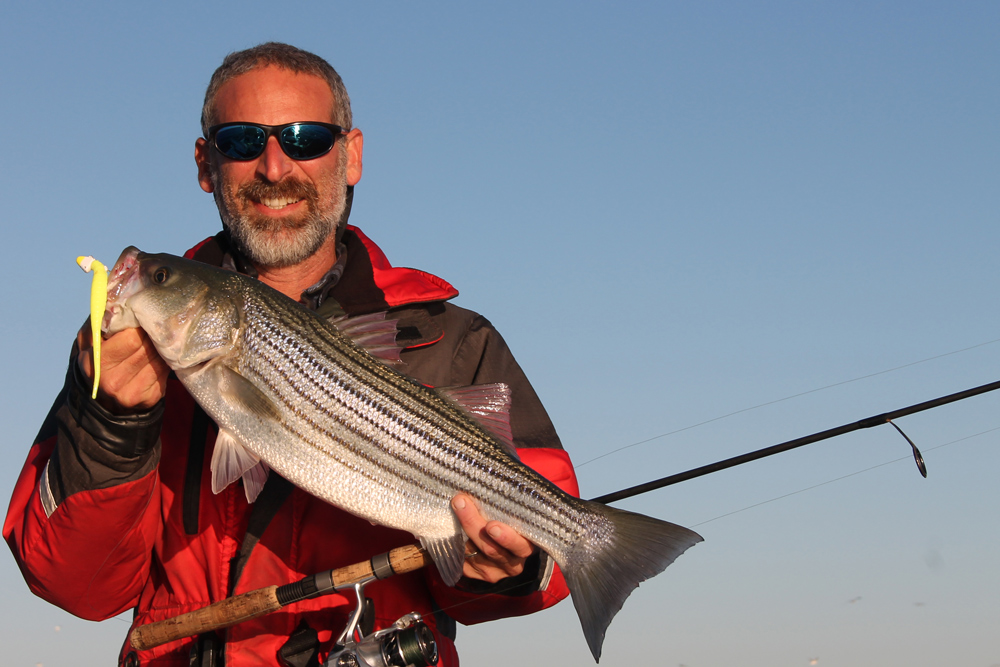Welcome back to FishTalk, fellow anglers, as summer melts into fall and the fishing season of 2018 continues to evolve. You may have noticed that I try to keep an upbeat attitude in this column, month after month. And I don’t want that to change, even as we address a topic that has a lot of people filled with angst: the floaters.

Anyone who fished the Chesapeake north of Chesapeake Beach this summer knows exactly what I’m talking about. From early June through August, we saw an awful lot of dead striped bass floating around on the water’s surface, particularly in the Upper and Middle Bay. In fact, this was the third year in a row we’ve seen such disappointing decay. From the feedback I’ve heard, it’s evident that many people have been blaming it on the big chumming fleets, particularly up north, and gut-hookings of undersized fish. Facebook has been alight with condemnation. Perhaps this even played a role in the DNR’s decision to institute the new circle hook regulations.
I believe many of us are potentially being drawn to erroneous conclusions about these floaters, and I’m afraid this could lead to decisions that don’t necessarily benefit the fishery. Here’s why:
Fact: it’s true that the majority of the floaters have been spotted in the general vicinity (or down-current) of where the chumming fleets have been the past few summers. But it’s just as true that this is where the vast majority of the fish have been located. So if stripers are dying for any reason, these are the areas where we would notice it.
Fact: a significant proportion of the floaters were 20-something-inch fish. It’s not very likely that these fish were caught and released by chummers because most catch-and-release anglers focus on jigging, topwater, and other forms of fishing. Most chummers keep legal-sized fish.
Fact: significant proportions of the fish we caught in these areas, chumming or otherwise, were in awful shape. They were covered in sores, utterly littered with lesions. This grew worse and worse as water temperatures rose. At times in some places one in 10 fish were clearly infected. At other times in other places, it seemed more like seven or eight out of 10.
Considering the above facts, should we contemplate the possibility that chumming and/or catch-and-release fishing is not the (or even a) major factor causing these floaters? Could it be disease, water quality, a lack of sufficient well-balanced forage, or some other factor(s) that we quite simply haven’t identified just yet?
I’m not a scientist, and I don’t know how to accurately and authoritatively answer these questions. But what I’m seeing and my lifelong experience on the Chesapeake Bay tells me that many of the assumptions we’ve all been making are quite possibly dead wrong.
I may not have any answer, but what I do have is a suggestion: let’s all band together to ask the scientists who can answer these questions to look into this. Let’s request that the state’s experts make it a priority to determine – scientifically – just what is killing all these fish. Then and only then can we talk about how to fix the problem. Maryland DNR, I’m talking to you. I have tremendous respect for your fisheries scientists, who have proven time and again that they can solve stunningly complex ecological mysteries that take place in our intricate and awe-inspiring Chesapeake Bay. It’s time for you to prove it once more. There’s plenty of time between now and next spring to develop some sort of way to gather some of the floaters that we’re sure to see next summer, test them, and figure out the deal. I’ll commit to helping, and I’d bet a huge number of the people reading this right now would help out, too.
Just tell us how.
Editor's Note: You can make your feelings on this situation (or any other issue) clear to the DNR by emailing them at [email protected]